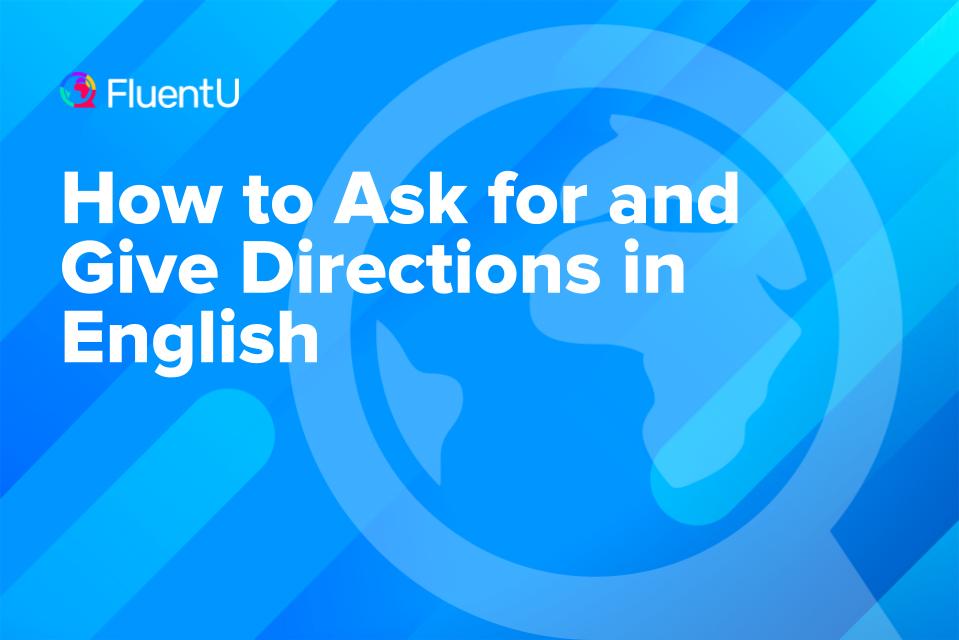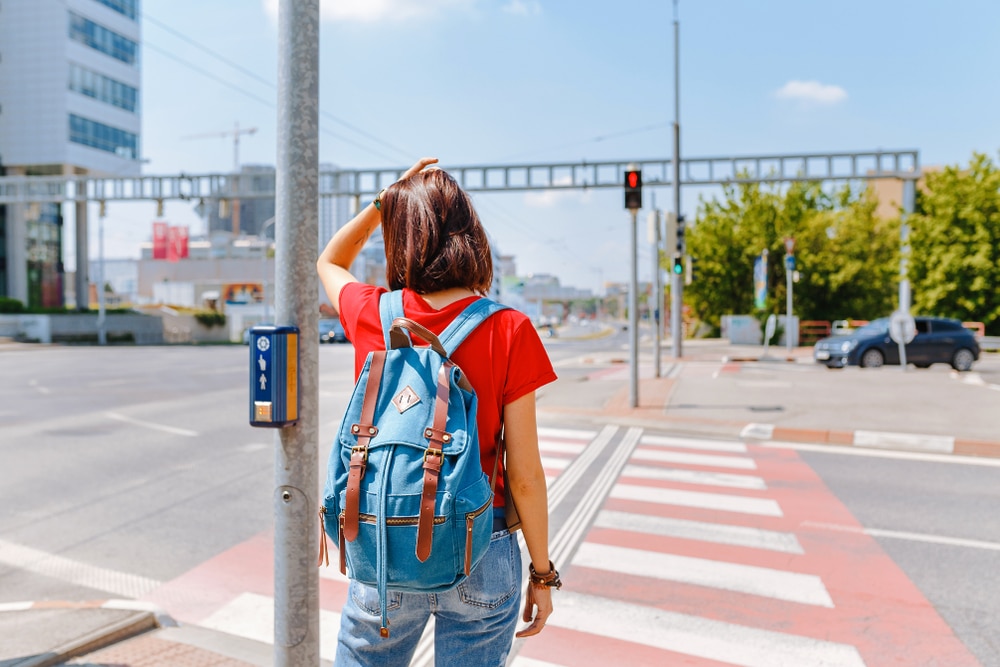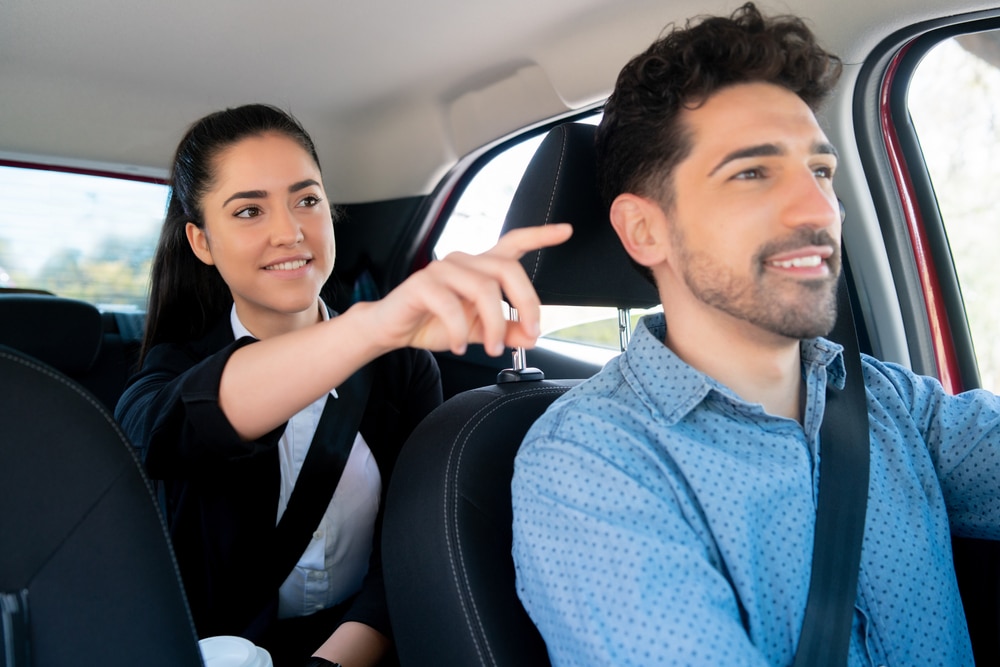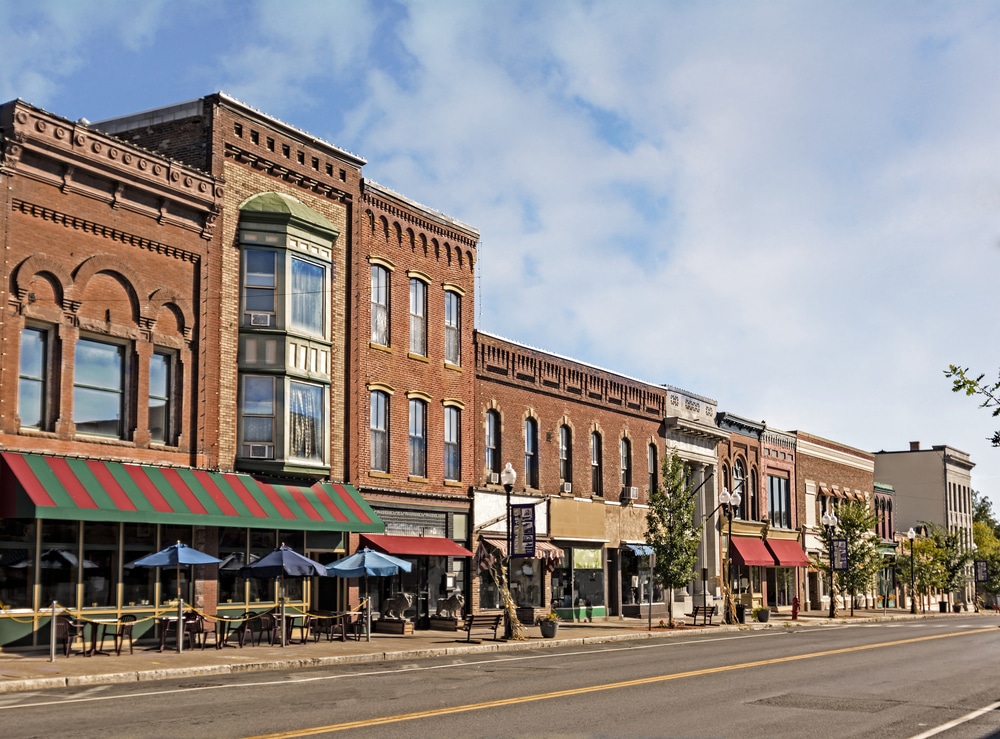How to Ask for and Give Directions in English

It’s easier now more than ever to find your way around, but asking for directions is still an essential English skill. After all, talking to locals is the only way to find out about cool cafes and hidden gems on the way to your destination.
Read on for 200+ useful expressions for asking and giving directions in English. Then check out an example conversation that puts these into practice.
Important Direction Vocabulary Words

Before we get into phrases for asking and giving directions, let’s look at the most basic words that you’ll need to know.
Verbs Related to Directions
The following verbs are very important. In fact, you can give very simple but effective directions just with the verbs “turn…” and “go straight…”
- Turn left
- Turn right
- Go straight
- Head… (north/south/east/west)
- Follow
- Cross
- Pass the…
- Reach
- Get off
- Arrive
- Depart
Position Words
You’ll need to know position words for clearer directions. For example, the destination might be near a coffee shop or next to a bank.
- Left
- Right
- Straight
- Ahead
- Behind
- Next to
- Across
- Near
- Beside
- In front of
- Between
- Far
- Opposite
- Above
- Below
- Close to
- Beyond
- Up
- Down
General Direction Words
These words represent the eight main directions in English. You’ll still see them on maps (and even on street names sometimes):
Asking for Directions

I know you might be shy and it’s hard to stop a stranger on the street. Perhaps you’re not confident about your spoken English fluency. Maybe it’s your listening skills that you’re worried about.
But asking for directions in English is actually quite straightforward if you know the right vocabulary!
Basic Phrases
When you’re approaching someone to ask for directions, start off with these polite phrases to get their attention:
Then you can ask for directions to the specific place you have in mind:
- How do I get to…?
- Where is the…?
- Can you show me the way to…?
- I’m trying to find…
- Where’s the nearest…?
- How can I reach…?
Distance
Distance can be described by kilometers or miles, but you can also ask about time—how long it’ll take you to get to your destination.
- How far is it to…?
- Is it a long walk?
- How long does it take to get there?
- How many blocks away is…?
- About how many minutes away is it?
Transportation
Common modes of transportation include walking, taking the bus or train, driving and even riding a bike.
- Is it walkable?
- Would it be better to take a bus or train?
- Should I take the bus or train?
- Is it accessible by car?
- Can I bike there?
Landmarks
Landmarks are very helpful for checking if you’re on the right track with the directions.
Clarifications
Since listening to directions can sometimes be confusing, you can make sure you’re understanding it correctly with these expressions:
- Just to confirm…
- Let me make sure I got it…
- Could you repeat that?
- Did you say turn left or right?
- I missed that, could you explain again?
- Can you go over that one more time?
Saying Thank You
Of course, don’t forget to thank the other person afterwards!
- Thank you so much for your help!
- I appreciate the guidance. Have a great day!
- Thanks! I’ll follow your directions.
- You’ve been a big help!
For more conversational phrases like this, you can check out FluentU.
FluentU takes authentic videos—like music videos, movie trailers, news and inspiring talks—and turns them into personalized language learning lessons.
You can try FluentU for free for 2 weeks. Check out the website or download the iOS app or Android app.
P.S. Click here to take advantage of our current sale! (Expires at the end of this month.)

Giving Directions

Chances are, you’ve experienced being asked for help before with directions. Giving directions in English is a little trickier because you need to imagine the route that the other person will take, but you’ll get the hang of it with practice! It’s important to give the right directions because you don’t want other people to get (more) lost, do you?
Basic Phrases
These are the most important phrases for you to remember:
- Turn right at…
- Turn left at…
- Go straight until you see…
- Continue on this street.
- Follow this street until…
- You’ll need to cross…
- Keep to the right.
Distance
Most of the time, people will want to know how long it takes to get somewhere.
- It’s about a 10-minute walk.
- You’ll come across it after about ten minutes.
- Drive for around 2 miles.
- It’s just a short distance away.
Suggesting Other Routes
If you know other ways to get to the destination, these are the phrases to use:
Landmarks
Don’t forget to mention landmarks so the people you’re helping out will be less likely to get lost!
- Pass the…
- Head to the…
- It’s right next to the…
- You’ll see a [landmark] on your left.
- You’ll pass a big [landmark], then…
- If you’re at the [landmark], you’ve gone too far.
- You’ll know you’re there when…
- It’s the building with…
- It’s right across from…
- You’ll recognize it by the…
- There’s a sign above the entrance.
- You can’t miss its…
- There’s usually a line forming outside.
Checking In
If you’re not rushing, you can ask these to make sure the other person understood your directions:
- Did that make sense?
- Do you follow so far?
- Do you need me to explain again?
- Do you want me to go over any part again?
Directions for Transportation
The vocabulary above is great for general directions, but there are also more specific expressions depending on the mode of transportation.
Driving

Asking for Directions
- Which exit should I take for…?
- Is [landmark] near here?
- Is it a long drive to [destination]?
- How many miles until I reach [destination]?
- Do I turn left or right at the next intersection?
- Should I keep going straight on this road?
- Is there a parking lot near [destination]?
- Do you know if there’s free parking nearby?
- Is there a faster way to get to [destination]?
- How’s the traffic usually on the way to…?
Giving Directions
- Pull over to the side.
- Take the next right.
- Make a U-turn.
- Turn left at the third traffic light.
- Take exit 45.
- Stay in the right lane.
- Enter the freeway.
- Merge onto the highway.
- Drive for about two miles.
- Watch out for the speed bump.
- Use the detour due to roadwork.
- Cross the intersection.
Riding the Train or Bus

The expressions below are for taking the bus, but you can easily adapt these for taking the train! Instead of saying “bus stop,” just say “station.”
Asking for Directions
- Sorry to disturb you, but I’m not sure which bus to take.
- Excuse me, would you know where the bus stop is?
- Which bus goes to…?
- Which bus should I take?
- Do you know the route number for…?
- Is this the right stop for…?
- How often does the bus come?
- What time is the last bus to…?
- Is this the bus heading to…?
- Where do I get off for…?
- How many stops before…?
- Do I need to change buses?
- Where can I buy a ticket?
Giving Directions
At the Airport

Asking for Directions
- Excuse me, where is the check-in counter for [airline]?
- I’m flying to [destination]. Where can I get my boarding pass?
- Can you point me to the self-check-in kiosks?
- How do I get to customs and immigration?
- I’m looking for gate [gate number].
- Is this the right terminal for [airline]?
- How do I get to the international terminal?
- Would you know where the nearest restroom is?
- Where is the airport lounge for [airline]?
- I’m looking for a place to charge my phone. Is there a charging station nearby?
- Is there a duty-free shop around here?
- Where can I find a good coffee place or restaurant?
- I’m looking for a bookstore. Is there one in this terminal?
- How do I get to the baggage claim area?
- Where is the exit for taxi pick-up?
- Can you point me to the airport shuttle or public transportation?
Giving Directions
- The check-in counter for [airline] is in Terminal 2, right over there.
- You can get your boarding pass at those kiosks to your left.
- Follow the signs for ‘Check-in’ and ‘Departures.’
- The security checkpoint is straight ahead past the elevators.
- Customs and immigration are downstairs. Just take the escalator down.
- Gate [specific gate number] is in this terminal, to your right.
- The nearest restroom is right behind you, next to the bookstore.
- The lounge for [airline] is on the second floor, near Gate 6.
- There’s a charging station just by that coffee shop over there.
- The information desk is in the middle of the terminal. They can assist you further.
- For taxis, exit those doors and follow the signs.
- The airport shuttle and public transportation are outside Terminal 1, to the left.
Common Place Names

Wherever you are, most cities will have these places in common. When it comes to directions, these are often used as landmarks (so yes, you do have to learn nouns!):
- Library
- Hospital
- Police station
- Post office
- School
- Supermarket
- Mall
- Convenience store
- Drugstore
- Bookstore
- Restaurant
- Cafe
- Bar
- Pub
- Bakery
- Park
- Museum
- Beach
- Stadium
- Hotel
- Hostel
- Resort
- Bus stop
- Bus station
- Train station
- Parking lot
- Taxi stand
- Bank
- ATM
- Gas station
- Restroom
- Tourist information center
- Gym
Example Conversation
To see how these direction words and expressions work in action, here’s an example conversation. Olivia is a traveler who’s looking for a library, while Alex is a stranger who’s willing to help her with directions:
Olivia: Excuse me, do you know where the Central Library is?
Alex: Oh, sure! The Central Library, right? Let me give you directions.
Olivia: That’d be great, thank you!
Olivia: Should I take the bus or is it walkable?
Olivia: How far is it to the library from here if I walk?
Alex: It’s about a 15-minute walk. Not too far.
Olivia: Are there any landmarks I should look out for, apart from the fountain?
Olivia: Did you say turn left or right on Maple Street?
Alex: Turn left on Maple Street.
Olivia: Got it. Thanks for the directions!
Alex: Oh, do you need me to explain again?
Olivia: No need, that was clear. I appreciate your help so much. Thank you, and have a great day!
Alex: You too! Bye!
Asking and giving directions are important components of basic conversational language. We hope the structure and words in this article will enlarge your vocabulary and make you comfortable enough to ask and give directions.
Knowing these words will make you feel more confident to go places and start talking with the locals. Who knows what’s awaiting you!
Happy travels!
Download: This blog post is available as a convenient and portable PDF that you can take anywhere. Click here to get a copy. (Download)
And One More Thing...
If you like learning English through movies and online media, you should also check out FluentU. FluentU lets you learn English from popular talk shows, catchy music videos and funny commercials, as you can see here:
The FluentU app and website makes it really easy to watch English videos. There are captions that are interactive. That means you can tap on any word to see an image, definition, and useful examples.
For example, when you tap on the word "searching," you see this:
Learn all the vocabulary in any video with quizzes. Swipe left or right to see more examples for the word you’re learning.

FluentU helps you learn fast with useful questions and multiple examples. Learn more.
The best part? FluentU remembers the vocabulary that you’re learning. It gives you extra practice with difficult words—and reminds you when it’s time to review what you’ve learned. You have a truly personalized experience.
Start using the FluentU website on your computer or tablet or, better yet, download the FluentU app from the iTunes or Google Play store. Click here to take advantage of our current sale! (Expires at the end of this month.)










